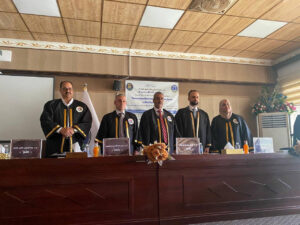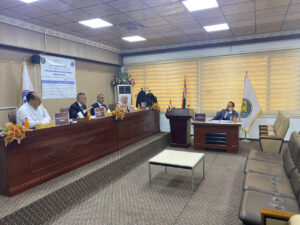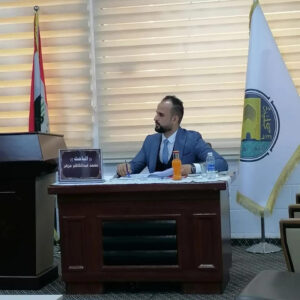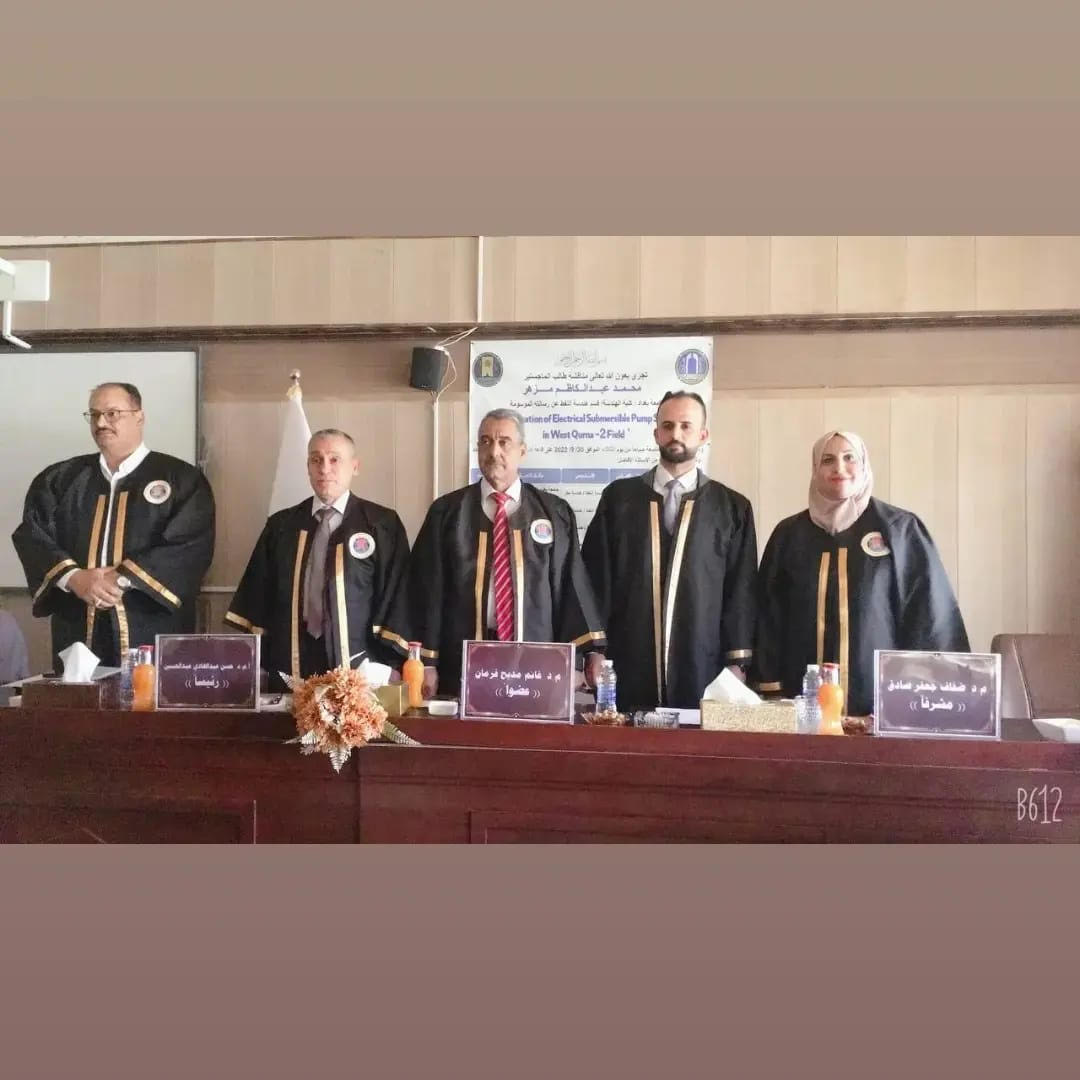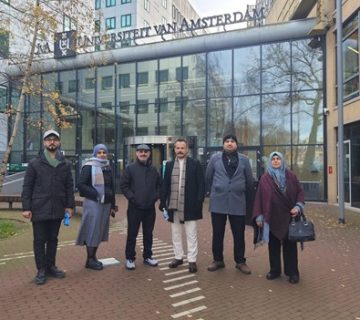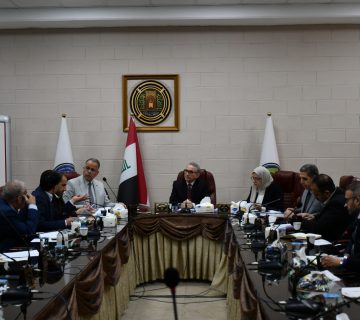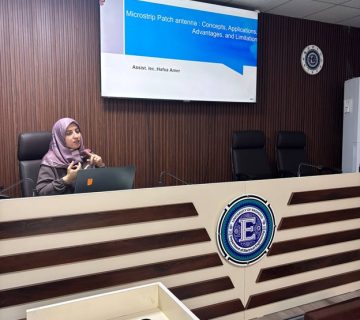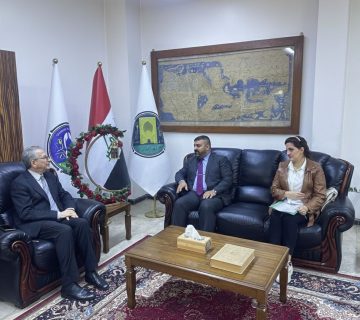جرت بقسم هندسة النفط مناقشة رسالة الماجستير الموسومة
Optimization of Electrical Submersible Pump System in West Qurna -2 Field
لطالب الماجستير محمد عبدالكاظم مزهر وذلك يوم الثلاثاء 20 ايلول 2022 في قاعة المناقشات بقسم هندسة النفط.
تألفت لجنة المناقشة من الذوات
ا.م.د. حسن عبدالهادي عبدالحسين من جامعة بغداد- كلية الهندسة- قسم هندسة النفط- رئيسا
ا.م.د. عبدالحسين هادي جاسم من ديوان محافظة النجف- عضوا
م.د. غانم مديح فرمان من جامعة بغداد- كلية الهندسة- قسم هندسة النفط– عضوا
م.د. ضفاف جعفر صادق من جامعة بغداد- كلية الهندسة- قسم هندسة النفط- عضوا ومشرفا
وبعد مناقشة الطالب والاستماع لدفاعه وتقييم مستوى الرسالة، منح الطالب درجة الماجستير بهندسة النفط
ادناه ملخص الرسالة باللغة الانكليزية
Since it was conceived in the 1910s by a Russian engineer, A. Arutunoff, the
electrical submersible pump (ESP) has advanced dramatically. now, ESP is the second most extensively utilized artificial lift technology in oil production, with over 100,000 installations worldwide. ESPs produce substantially more crude oil, but they have a restricted use window.
It may be quite difficult for production engineers working in the petroleum industry to make decisions in real-time, particularly when there are numerous wells present, each of which has its own unique set of operating parameters and production behaviors. In this thesis, a Middle East oil field (WEST QURNA 2) with 21 production wells installed with electrical submersible pumps and producing 136,000 (STB/day) of oil was evaluated. The goal of this work is to use Real-Time Production Optimization (RTPO) on a numerical model of the output system as a decision support tool to discover ESP frequency values that optimize oil production while respecting several
operational limitations. The research included the design of wells, the installation of submersible pumps, matching the operating conditions of the well with the real conditions, and then starting to connect the wells with each other in the form of two clusters, each cluster connected to the sink through the main transmission pipe. After completing the construction of the surface network for the well, the maximum oil production in these wells reached 136,000 barrels per day with a water production of about 13,007 barrels of water per day.This research uses a robust method based on the Basic-Open-Source Mixed Integer (BONMIN) framework applied to mixed-integer nonlinear programming (MINLP) to construct a Real-Time Production Optimization (RTPO).Four well-operation scenarios were considered. In the first scenario, the network’s oil production capacity was enhanced to 178,936.8 barrels per day and its water output to 15,185.47 barrels per day.
In the second scenario, water production was limited since it reduces the pump’s efficiency and adds to the electric motor’s load. To save on electricity and reduce
motor loads, the network’s optimal oil production was 168,403.4 barrels per day and water production was 10,478.65 barrels per day.The third and fourth scenarios included imposing different operating conditions due to a lack of electrical power or minimizing production or for certain conditions that require a reduction in total field production, so the optimum oil network production was 129,221.5 barrels per day and water production was 11669.61 barrels per day. by limitation water rate to10691.79 barrels per day. The network’s oil production equaled 126,686.8barrels per day of oil production.
sensitivity analyses at different reservoir pressure (PR) and water cut (WC) values were conducted because Optimization is a dynamic process as the water cut increases with time and as the water requires more head, the ESP will handle less gross rate unless the frequency is optimized and in cases where the reservoir is not subjected to strong pressure support (water drive, water injection….), this can be the main reason behind production declinm
